Flowers to grow in damp soil
If you are looking for flowers to grow in damp soil, this article can help. Many gardens have an area that remains damp for much of the year and it can be hard to know what to plant to provide a splash of colour. As the climate becomes more challenging for gardening, choosing plants that are right for our particular microclimate makes more sense, will be more cost effective and be less work.
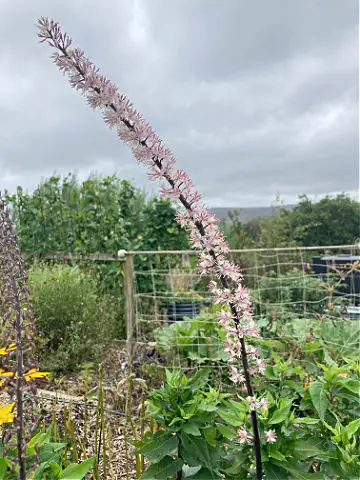
This selection of plants provides interest at differing times of the year, with exciting flowers, colourful foliage or interesting shape and form. I continue to grow most of these in my own garden because I know that they perform well.
Kerria Japonica Pleniflora (d)
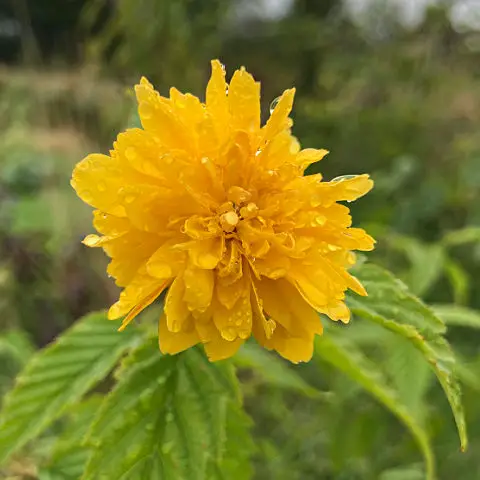
The first time I saw Kerria flowers, I thought that they looked like scruffy pom poms floating in the air. This spreading shrub has wiry stems upon which the yellow-orange flowers appear in spring. Height 250cm and spread 200cm. The stems retain their green colour throughout the year and in milder areas, leaves may remain on the plant year-round. It is unfussy about situation, thrives in full sun and partial shade and requires moist, but well-drained to well-drained soil. It is hardy throughout UK, even in severe winters.
Actaea simplex (Atropurpurea Group) ‘Brunette’
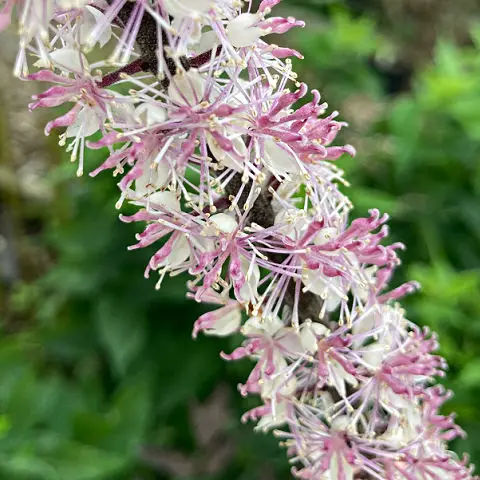
Also known as Cimicifuga, this hardy, herbaceous perennial provides interest with dark purple foliage from spring to autumn. It prefers damp and even poorly drained soil. Grow in any aspect, except south-facing, it prefers partial shade and a bit of shelter (because of its height).
Height 100cm – 150cm and spread up to 100cm. In autumn, purple buds open to white flowers with a hint of pink, which are held above the foliage. Harmful if eaten and the berries are poisonous.
Lobelia cardinalis

The rich, scarlet red flowers make a bright and bold statement as they rise above the foliage. This perennial lobelia produces flowers from late summer and through autumn. Height 90cm and spread 50cm.

It prefers poorly drained, moisture retentive soil in full sun or partial shade in all but north-facing situations. Hardy in the milder areas of the UK. In colder areas, you could grow it in pots and move to a frost-free place in during autumn.
Filipendula ulmaria
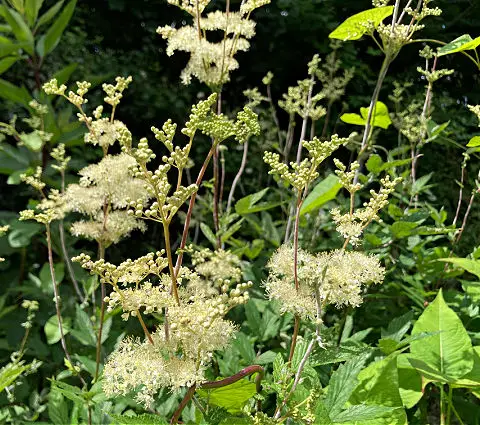
Meadowsweet grows into a dense clump of foliage. From June to September irregular clusters of highly fragrant, cream, flowers appear. Height and spread 100cm. It will fail to thrive on chalky or sandy soil, preferring moist, but well drained or poorly drained soil. Grow in full sun or partial shade. It is native to the UK and Ireland and fully hardy. The buds, flowers and seeds are edible and taste of a combination of hay, almond and vanilla.
Physocarpus opulifolius ‘Diabolo’
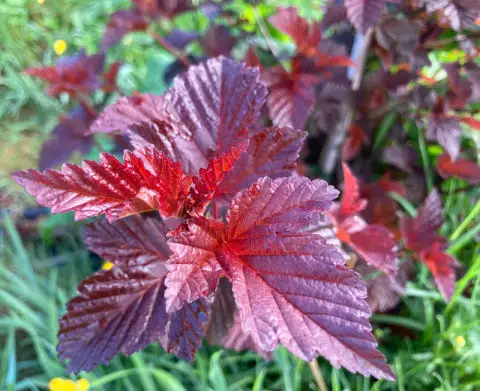
A relatively unfussy plant that prefers an acidic, humus-rich soil that is fairly fertile. This deciduous shrub is very hardy, with red to purple leaves that produce clusters of small pink buds that open to creamy-white flowers in summer. Height and spread 150cm – 250cm. Once established, it has a suckering habit, so if space is limited, try growing in a large container.
Zantedeschia aethiopica
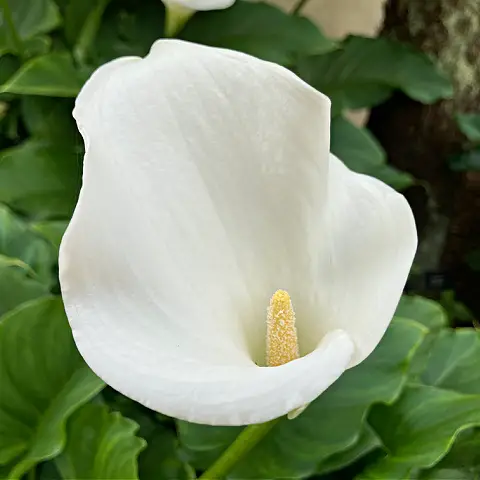
Depending on your growing conditions, this Arum lily is an herbaceous perennial or semi-evergreen. It has long, dark green, glossy leaves and during summer and autumn produces yellow flowers that are wrapped by a white spathe. Height to 100cm and spread to 50cm.
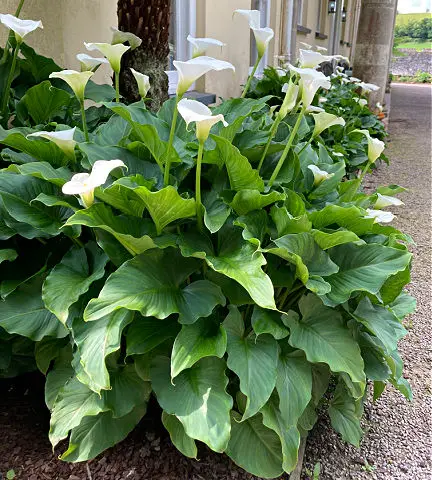
It prefers damp soil, but does need some drainage and would fail to thrive in soil that is waterlogged in winter. Grow in full sun or partial shade. Although other species of Zantedeschia are available, Zantedeschia aethiopica is the only one hardy that is widely available.
Candelabra Primula hydbrids (Pf)
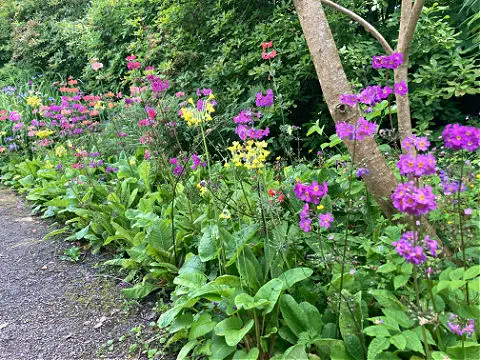
From late April until July the unmistakable flower stems appear with whorls of flowers at intervals up the stem. They are available in a wide range of colours including, white, pink, red, orange, yellow and purple. Their leaves grow from a basal rosette. These primulas prefer neutral or acid clay or loamy soil, in full sun or partial shade, and are fully hardy throughout the UK and Ireland. They are ideal for cheering up an awkward, poorly-drained spot in the garden. Flowering height ranges from 30cm to 100cm.
Hablitzia tamnoides
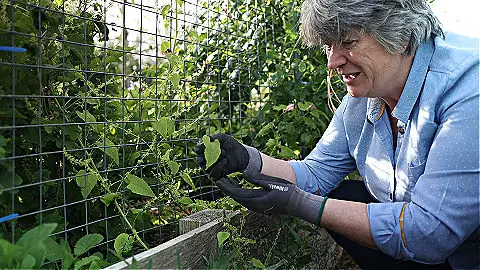
Add an edible like climbing spinach, also known as Caucasian spinach, that reaches 300cm in height. It provides a useful harvest of young shoots from March and leaves from April and through the hungry gap. This is a hardy, long-lived perennial vegetable that thrives in partial shade and will need some support for climbing. May take three years to establish, but it can then live for twenty year or more. The young shoots and baby leaves can be added to salads and the more mature leaves used in the same way as standard spinach.
More information
The article about flowers to grow in damp soil was written for Amateur Gardening magazine and published in late winter 2025. I have updated some of the specific varieties and images. Additionally, links are included to help you find the suggested plants.
- Autumn Groundcover - December 19, 2025
- Beautiful Bog Garden Plants - December 5, 2025
- Climbing plants for small gardens - November 21, 2025
